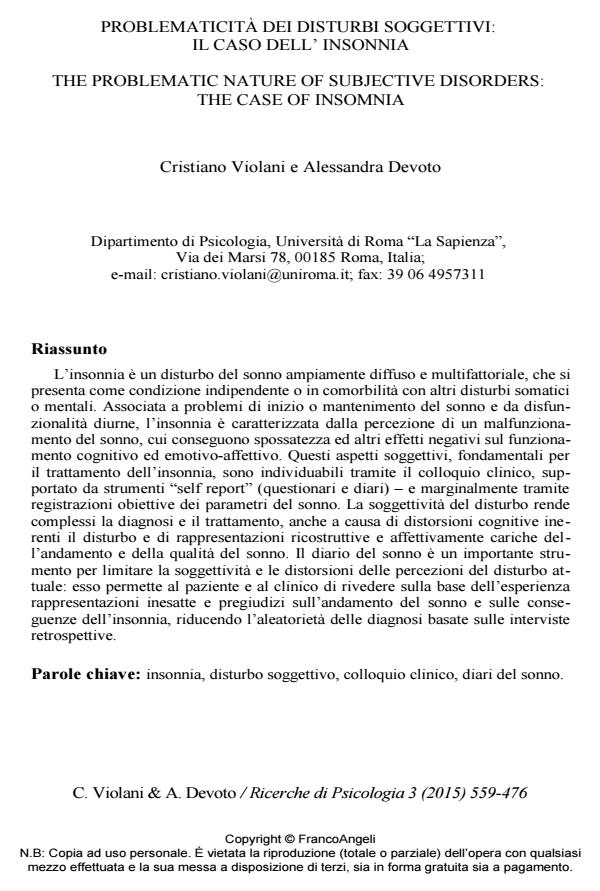The problematic nature of subjective disorders: the case of insomnia
Journal title RICERCHE DI PSICOLOGIA
Author/s Cristiano Violani, Alessandra Devoto
Publishing Year 2015 Issue 2015/3
Language Italian Pages 18 P. 559-576 File size 189 KB
DOI 10.3280/RIP2015-003008
DOI is like a bar code for intellectual property: to have more infomation
click here
Below, you can see the article first page
If you want to buy this article in PDF format, you can do it, following the instructions to buy download credits

FrancoAngeli is member of Publishers International Linking Association, Inc (PILA), a not-for-profit association which run the CrossRef service enabling links to and from online scholarly content.
Insomnia is a widely diffused multifactorial sleep disorder. It can be an independent condition or comorbid with other somatic or mental disturbances. It is characterized by difficulties in initiating and maintaining sleep and by negative diurnal consequences. Its main feature is the subjective perception of sleep symptoms as well as of fatigue and other negative consequences on cognitive and affective functioning. The subjective nature of the disorder is recognized by the current diagnostic classifications and by the guidelines for its management. The main method for the diagnostic assessment of insomnia is the clinical interview, supported by self report instruments, while markers and objective measures are reserved to particular cases. Due to the subjective nature of insomnia its diagnosis and treatment are complex, also because of comorbilities, cognitive distortions, faulty and affectively charged representations of the pattern and quality of sleep. Sleep diary is the crucial tool to reduce subjective and faulty perceptions about the actual sleep disturbance and play an important role both in the diagnosis and treatment of insomnia. Sleep diary allows a diagnosis referred to the present condition, by comparing the current sleep pattern, and discloses both the factors involved in the disorder and the daytime consequences of insomnia during treatment.
Keywords: Insomnia, subjective disorder, clinical interview, sleep logs.
Cristiano Violani, Alessandra Devoto, Problematicità dei disturbi soggettivi: il caso dell’ insonnia in "RICERCHE DI PSICOLOGIA " 3/2015, pp 559-576, DOI: 10.3280/RIP2015-003008